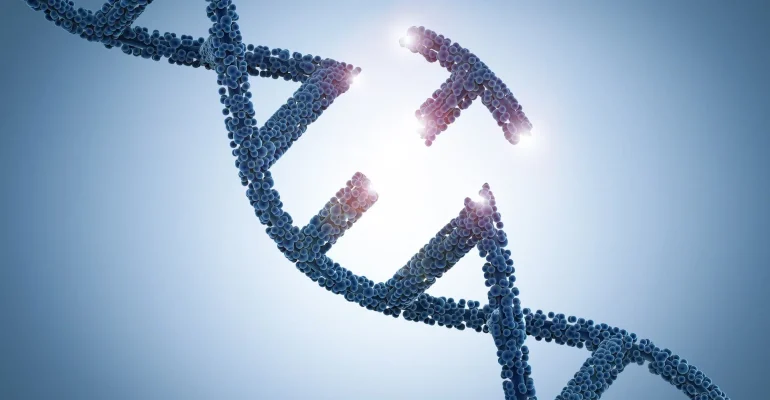Harnessing CRISPR-Cas9 in Food Production
CRISPR-Cas9, a revolutionary tool in the realm of genetic engineering, has been making waves in various scientific fields, including food production. Its precision, efficiency, and versatility have opened up new avenues for enhancing crop resilience and nutritional content. As the global population continues to rise, there is an increasing demand for food that is not only abundant but also nutritious.
This article delves deep into the applications of CRISPR-Cas9 in food production, focusing on its potential in the US market.
The CRISPR-Cas9 Mechanism: A Brief Overview
At its core, CRISPR-Cas9 is a genome editing tool that allows for precise modifications to DNA. It utilizes a molecule known as RNA to target specific DNA sequences within a genome. Once targeted, the Cas9 protein acts as molecular scissors, cutting the DNA at the desired location. This cut can then be repaired by the cell, either by joining the ends back together or by inserting a new piece of DNA.
CRISPR-Cas9 represents a revolutionary advancement in the field of genetic engineering, giving scientists the unprecedented ability to edit genomes with precision. The system is derived from a natural defense mechanism found in bacteria, which use CRISPR sequences to remember and destroy viral DNA.
The CRISPR-Cas9 tool works by harnessing a guide RNA (gRNA) molecule that is designed to match the DNA sequence of interest. The gRNA is complexed with the Cas9 enzyme, and this combination navigates the cell’s nucleus, scanning for the DNA sequence that complements its RNA guide. When the correct sequence is located, the Cas9 enzyme performs a double-strand break in the DNA helix.
This interruption in the DNA sequence triggers the cell’s natural repair mechanisms. There are two main pathways for this repair: non-homologous end joining (NHEJ) and homology-directed repair (HDR). NHEJ can lead to the introduction of insertions or deletions (indels) at the site of the break, which can disrupt or “knock out” the function of a gene. This is particularly useful when the goal is to inactivate a gene that may be causing a problem, like a genetic disease.
Applications of CRISPR-Cas9 in Crop Resilience
1. Disease Resistance: One of the primary applications of CRISPR-Cas9 in agriculture is to enhance disease resistance in crops. By targeting and modifying specific genes, crops can be made resistant to various pathogens, reducing the need for chemical pesticides.
2. Climate Resilience: With changing climate patterns, there is a pressing need for crops that can withstand extreme weather conditions. CRISPR-Cas9 has been employed to develop crops that can endure drought, salinity, and extreme temperatures.
3. Pest Resistance: Similar to disease resistance, CRISPR-Cas9 can be used to modify crops to make them resistant to various pests, reducing the reliance on harmful chemical pesticides.
Enhancing Nutritional Content
1. Biofortification: CRISPR-Cas9 can be used to enhance the nutritional content of crops. For instance, rice has been modified to produce higher levels of Vitamin A, addressing the global issue of Vitamin A deficiency.
2. Altering Fatty Acid Content: Crops like soybeans have been edited to produce oils with a healthier fatty acid profile, which is beneficial for heart health.
3. Enhancing Mineral Content: Crops can be modified to absorb and store higher levels of essential minerals like iron and zinc, addressing mineral deficiencies in various populations.
Case Studies in the US Market
1. Waxy Corn: DuPont Pioneer, a major agricultural company in the US, has used CRISPR-Cas9 to develop a new variety of waxy corn. This corn is used in various food products and industrial applications.
2. Mushrooms: Researchers at Pennsylvania State University have used CRISPR-Cas9 to develop mushrooms that don’t brown as quickly, increasing their shelf life.
3. Tomatoes: Scientists in the US have employed CRISPR-Cas9 to modify tomatoes to ripen later, allowing them to be harvested when they are more flavorful.
Ethical and Regulatory Considerations
While CRISPR-Cas9 offers immense potential, it also brings forth ethical and regulatory challenges. The US Department of Agriculture (USDA) has been working on establishing guidelines for the use of CRISPR in food production. There are concerns about the long-term effects of consuming genetically edited foods and the potential ecological impacts if these crops crossbreed with wild varieties.
CRISPR-Cas9 is undeniably a game-changer in the world of food production. Its potential to enhance crop resilience and nutritional content can address many of the challenges faced by the global food industry. However, it is crucial to approach its applications with caution, ensuring that all potential impacts are thoroughly understood and addressed. As research progresses and more applications emerge, CRISPR-Cas9 will undoubtedly play a pivotal role in shaping the future of food.
CRISPR technology enables scientists to engineer plant varieties with enhanced nutritional profiles. For instance, they can modify certain plants to yield higher vitamin content, such as “golden bananas,” which exhibit a deeper hue as a result of their elevated beta-carotene levels. Additionally, they can alter plants to improve their digestibility for humans and animals.
Looking for More Resources on ISO 22000?
If you found this article helpful, explore our premium resources designed to help you achieve ISO 22000 certification efficiently:
- Complete Documentation Package for ISO/IEC 22000 2018: Get all the essential templates and documents you need for fast, easy implementation.
- Online Course on ISO/IEC 22000 2018 : Enroll in our comprehensive training to master the key concepts and practical steps toward certification.
- ISO/IEC 22000 2018 Checklist: Download our detailed checklist to ensure you’ve covered every step of the process.
These resources are tailored to meet your needs and ensure a smooth certification journey. Explore them today and get one step closer to success!

















